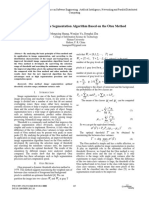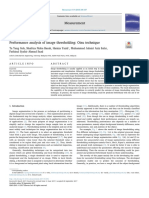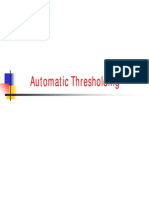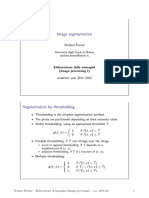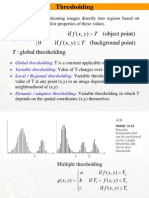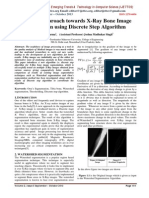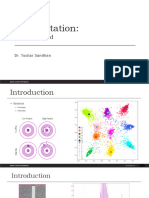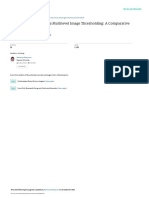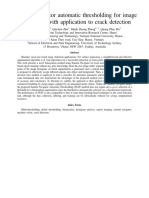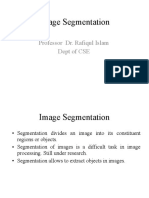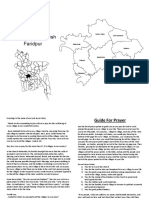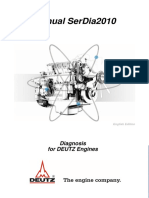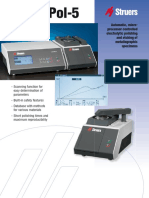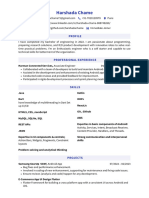0% found this document useful (0 votes)
70 views4 pagesOtsu Algorithm
The Otsu algorithm is an automatic thresholding technique for grayscale images that optimally separates pixel intensities into foreground and background by maximizing inter-class variance. While it offers advantages such as user-friendliness, robustness, and computational efficiency, it has limitations including sensitivity to noise and the assumption of a bi-modal histogram. Understanding these strengths and weaknesses is essential for effective application in image processing.
Uploaded by
Soham MitraCopyright
© © All Rights Reserved
We take content rights seriously. If you suspect this is your content, claim it here.
Available Formats
Download as PDF, TXT or read online on Scribd
0% found this document useful (0 votes)
70 views4 pagesOtsu Algorithm
The Otsu algorithm is an automatic thresholding technique for grayscale images that optimally separates pixel intensities into foreground and background by maximizing inter-class variance. While it offers advantages such as user-friendliness, robustness, and computational efficiency, it has limitations including sensitivity to noise and the assumption of a bi-modal histogram. Understanding these strengths and weaknesses is essential for effective application in image processing.
Uploaded by
Soham MitraCopyright
© © All Rights Reserved
We take content rights seriously. If you suspect this is your content, claim it here.
Available Formats
Download as PDF, TXT or read online on Scribd
/ 4









